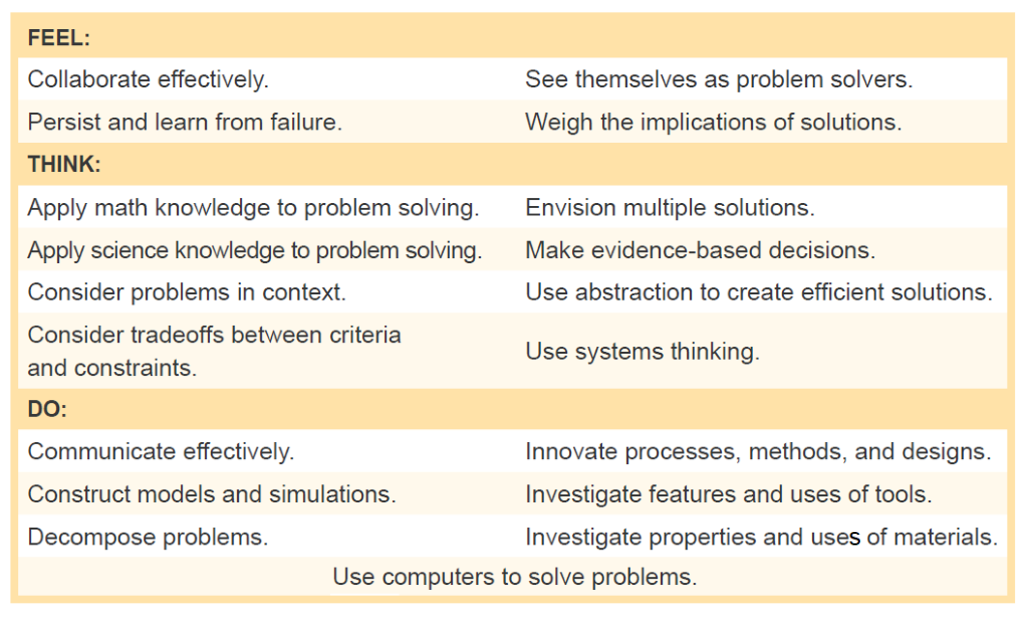As mentioned in my previous post, Introducing the EiE Habits of Mind, our team faced several questions as we began developing Engineering and Computer Science Essentials: Should we revise our list of Engineering Habits of Mind? Should we create new Computer Science Habits of Mind? Were the two fields similar enough that they should share Habits?
Here’s a look at how we answered these questions.
Not All STEM Fields Are the Same
Often, we think of the fields of science, mathematics, engineering, and computer science as closely related; we often address them together under the acronym “STEM.” Science, engineering, and computer science are frequently taught by the same teachers or as part of the same class. Practitioners in these fields draw heavily on one another’s expertise—physics requires mathematics knowledge, for example, while engineering requires physics knowledge.
As we considered the STEM fields, however, we recognized critical differences in their problems, goals, and considerations—but striking similarities between engineering and computer science.
Truth vs. Technology
One key difference between STEM fields is their goal. For science and mathematics, the goal is to determine facts that are true about the natural and numerical worlds—for example, how planets move, or how the angles and side lengths of a triangle relate. But discovering facts is not the goal of engineering and (elementary-level) computer science. The goal of those fields is to design useful technologies—for example, hand pollinators or animations.
The Importance of Context
Another difference among the STEM fields is the importance they place on context. Science and mathematics attempt to discover facts that are true generally, regardless of context—for example, how gravity affects objects. Engineering and computer science, although they employ abstraction, ultimately focus on creating specific, context-dependent products—for example, a bridge over a particular river or a program for a particular robot. As a result, engineering and computer science are sensitive to considerations of time, money, aesthetics, and public opinion in a way that science and mathematics are not.
The EiE Habits of Mind
The more we considered these similarities, the more we felt that engineering and computer science share a set of disciplinary practices in a way that the STEM fields generally do not. We decided to emphasize this similarity by creating a single, shared list for both the engineering and computer science portions of the Essentials curriculum. And so, with some revision, the Engineering Habits of Mind became the EiE Habits of Mind:

In our next post, we’ll look more closely at these Habits of Mind and examine why they are useful in both engineering and computer science classrooms.

Derek Butterton is a curriculum developer at EiE, where he creates engineering and computer science resources for classrooms, out-of-school-time programs, and families. He is especially interested in the history and use of Habits of Mind. When not at work, he enjoys playing board games and spending time outdoors.








